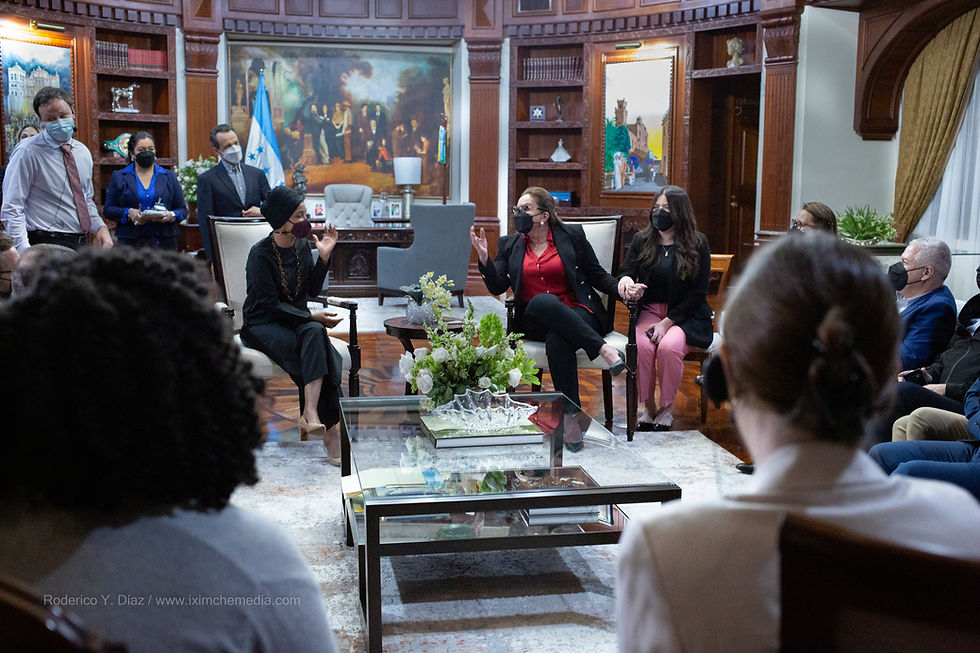A Lifetime Journey in Seven Days
- Colombia Colombia Team

- Mar 3, 2010
- 3 min read
As I joined the group of fifteen Long Islanders headed to Oaxaca, Mexico I knew very little of what to expect. The goal of studying and understanding the root causes of migration was an enormous task in and of itself. Doing it within seven days seemed impossible. What I understood however, was the urgency of doing so.
Long Island, regarded as one of the most segregated suburbs in the U.S., has consistently made national headlines in the last decade for heinous acts committed against “undocumented immigrants.” The anti-immigrant sentiment has been fueled by legislators who would rather play on people’s fears than offer viable solutions. It has been magnified by stagnant wages earned by overworked and underpaid blue collar workers who often blame the “illegal” for their current economic conditions. It is amplified by the anger felt towards “day laborers, who stand on corners and don’t pay taxes, yet use up our resources.” This illogical reasoning is intended to somehow justify the misplaced anger, hatred, and bigotry.
The surrounding anti-immigrant sentiment only added to the challenge our racially, professionally, and economically diverse group faced: trying to understand and bring back to Long Island the reasons immigrants come here. Within seven days, we did just that!
Our journey began with a crash course in Mexican history that forged a bond between our struggles and the dire struggle of the Mexican people to survive. We learned about the unequal trade agreement that has prompted forced migration to the U.S. while further impoverishing the citizens of Mexico and the United States. We walked and lived amongst the people of agricultural communities that once thrived, now pushed to the brink of extinction by economic policies. We heard firsthand accounts from individuals who were currently on their journey north, risking their lives not for what has been coined as “the American Dream” (nice car, big house, fancy clothes, and other luxuries), but rather the most meager necessities (the ability to feed and clothe their families, have shelter, etc.). This was the pinnacle of my experience.
One immigrant was asked by one of our group members why he was willing to leave behind his land, family, culture, and language while possibly risking his life. “I would rather die trying to cross that border, than live and see my family starve.” Instantly his words were etched in my mind and heart. His words forced me not only to put myself in his shoes, but to walk in them as well. Suddenly it was clear. I too would risk my life in an effort to feed my family. I too would be willing to sacrifice my freedom, my culture, and my language to clothe them. If given the option, I too would risk my life rather than live and see my family starve. Wouldn’t you?
Our nation has played a critical role in instituting policies that have not only promoted migration, but blatantly forced migration. Our government condones and supports financial institutions that benefit from the misery of poverty felt by millions in Mexico and other nations. We have consistently placed the interest of big business ahead of the common interest.
Yet, the most valuable lesson of all was how to create change. Having returned to Long Island, many of us have begun to host presentations, educating the rest of our communities about our experiences. Some have begun blogging and writing editorials that are finding their way into local papers. Others have set up meeting with Congressional representatives to begin discussing ways to change policy.
Thanks to Witness for Peace, our delegation has become engaged in Acción Permanente Por La Paz…y Justicia!
“If the misery of the poor be caused not by the laws of nature, but by our institutions, great is our sin.” -Charles Darwin




Comments